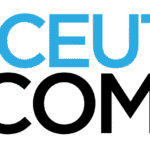Modern workplaces are embracing radical changes in employee scheduling flexibility, with some companies discovering that seven-day work distribution offers unexpected benefits. Traditional work structures are being challenged as organizations seek innovative approaches to work-life balance optimization.
British consultancy firm Lumen, based in Cardiff and led by CEO Aled Nelmes, has pioneered an extraordinary workplace model. After successfully implementing a four-day workweek, the company evolved toward something more revolutionary. Employees now enjoy complete autonomy over their 32-hour weekly schedule, with permission to distribute these hours across any timeframe that suits their personal needs.
This groundbreaking approach eliminates conventional time restrictions entirely. Workers can choose to concentrate their hours into fewer days or spread them across the full week, including weekends. The flexible scheduling system requires only one collective commitment : three weekly hours dedicated to team meetings and professional development sessions.
Trust-based management revolutionizes traditional workplace structures
The foundation of Lumen’s success rests on employee trust and autonomy. Nelmes believes that excessive micromanagement stifles productivity and fails to recognize individual work preferences. His philosophy centers on the understanding that different people achieve peak performance through varied approaches.
This management style demands specific employee characteristics to function effectively. Workers must possess strong self-discipline and organizational skills to thrive without traditional oversight. The system naturally attracts individuals who value independence and can manage their responsibilities without constant supervision.
However, this approach isn’t universally applicable. Some team members struggled to adapt to such extensive freedom, highlighting that radical flexibility models require careful employee selection and cultural alignment. Those who embrace the company’s values find remarkable opportunities for personal and professional integration.
The results speak volumes about the effectiveness of this trust-based approach. Lumen experienced zero employee turnover, increased productivity levels, and significantly higher job satisfaction rates. These outcomes demonstrate that when properly implemented, autonomous work arrangements can benefit both organizations and their workforce.
Personalized work schedules create unique productivity patterns
Despite unprecedented scheduling freedom, most Lumen employees maintain relatively traditional patterns with strategic adjustments. They use their flexibility for medical appointments, family obligations, and personal activities that would typically require time off or create scheduling conflicts.
Some workers have discovered unconventional preferences that maximize their effectiveness. One employee specifically chooses Sunday work sessions, finding the quieter environment more conducive to concentration and deep work. This flexibility allows individuals to align their most productive hours with their work commitments.
The personalized scheduling approach provides significant financial benefits for families. Reduced time constraints translate into lower expenses for :
- Childcare services during non-traditional hours
- Cleaning and household maintenance
- Children’s extracurricular activities
- Transportation costs during peak hours
Nelmes emphasizes that supporting employees as parents directly enhances their professional performance. When workers can fulfill family responsibilities without stress, they bring greater focus and commitment to their professional duties. This holistic approach to employee wellbeing creates a positive feedback loop that benefits all stakeholders.
Industry applications and implementation challenges
The seven-day workweek model shows particular promise in service-oriented industries that support remote work and objective-based performance measurement. Technology companies, marketing agencies, and consulting firms possess the structural flexibility necessary for successful implementation.
However, significant limitations exist for industries requiring continuous physical presence. Manufacturing, construction, hospitality, and healthcare sectors face substantial barriers when considering flexible scheduling systems. These industries depend on consistent staffing levels and coordinated team presence for operational success.
Organizations considering similar models must evaluate their core business requirements carefully. The approach works best when outputs can be measured independently of time spent, and when collaboration can be managed through scheduled interactions rather than constant availability.
Successful implementation requires careful change management and clear communication about expectations. Companies must establish performance metrics and accountability systems that focus on results rather than hours worked. This shift represents a fundamental change in management philosophy that extends beyond scheduling flexibility.
Future implications for workplace evolution
Lumen’s experiment represents a significant step toward reimagining traditional employment structures. As more companies recognize the benefits of extreme workplace flexibility, similar models may become more widespread across compatible industries.
The success of this approach challenges long-held assumptions about productivity and supervision. It suggests that many organizations could benefit from reducing oversight and increasing employee autonomy, provided they maintain appropriate support systems and clear performance standards.
This evolution in workplace design reflects broader societal changes in how people view work-life integration. Modern employees increasingly value flexibility over traditional benefits, driving companies to innovate in their employment offerings.
The model’s sustainability will depend on continued positive outcomes and the ability to scale across different team sizes and business complexities. As more data becomes available, other organizations will likely adapt and modify this approach to fit their specific needs and industry requirements.










